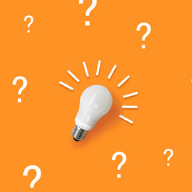5 steps to spot the weak signals of disruption

Learning & Development
152 week ago — 6 min read
Do you make time to observe and process what’s happening beyond your “must do’s” or are you measuring your daily productivity against a defined task list?
When was the last time you stopped to look twice at details that just don’t seem “normal” — that may even seem outlandish or inappropriate? Do you dismiss these as trivial, or as mistakes, or even as crazy, or do you ever consider whether they foreshadow something bigger?
Hindsight has limited value beyond pointing to missed opportunities. And, of the many truths reinforced by events of the past two years, one is certainly that evolutionary change can unexpectedly become revolutionary.
That’s why creating the capacity to spot, assess and sort the weak signals – the early indicators of disruptive change that can help us anticipate the future – is an imperative.
Of the many truths reinforced by events of the past two years, one is certainly that evolutionary change can unexpectedly become revolutionary.
Weak signals are easy to miss, for good reason
Weak signals are all around us, all the time. The challenge in recognizing them is precisely that they are weak.
Weak signals:
- Are out of place versus norms.
- Show up at first as crude, implausible versions of their future state.
- Can easily get blocked by groupthink.
An example of a discounted weak signal
In the early 2000s Citi Cards’ digital transformation team exposed cardholders to the idea of “tap and go” RFID technology as a means of payment with a small device attached to a keyring that would replace physical plastic credit cards. Their first use case: paying fares in urban transit systems.
The weak signal that stimulated this experiment was emotional and qualitative: Users’ intense, enthusiastic reaction to how they would feel commuting without having to pull out their wallet and fumble with malfunctioning “swipe” cards in crowded subway stations. To the innovation team, which I led at the time, the immediate emotional response, and the language people used to describe their feelings, signaled something potentially much bigger than the mundane daily experience of commuting.
Banking traditionalists were quick to dismiss the possibilities. They were attached to the primacy of the card as the form factor. Retailers, upon whom scale depended, resisted funding nominal technology upgrades to enable acceptance of a new form factor at the point of sale.
The prevailing attitude was “if it’s not broken don’t fix it.” After all, why change, when the current form factors — magnetic stripes embedded in plastic cards — performed virtually 100% of the time?
The result? Within a decade contactless payments became ubiquitous, with the pandemic acting as an accelerant. And upstarts able to spot the opportunity, who were not saddled with legacy ways of operating, entered the market, contributing to the erosion of financial institution’s customer relationships.
How to read weak signals of change
You don’t need a magician’s skills or a crystal ball to see weak signals. To get started, you only have to value and reward curiosity. Next, commit to a process that more closely resembles an ongoing anthropological journey than a traditional strategic analysis.
Follow these five steps to get started:
- Embrace the mindset. Cultivate curiosity as a habit. A simple beginning? Start by recognizing and accepting that we filter what we see based on what we know. Have an open mind, challenge preconceptions, and stop to explore for more when you come upon the unusual.
- Cast a wide and decentralized net to gather signals. Go far to the edge of your networks and daily habitat for observations, paying special attention to things that stand out as strange or curious.
- Create a mechanism to interpret and understand the signals. Keep a database and/or a journal – include narrative, images, and other stimuli – of signals, including what is interesting, and make notes of what each suggests.
- Channel the signals for monitoring and/or further action. Begin to organize the signals – perhaps a few key trends are emerging that suggest logical groupings, e.g., which should be set aside, monitored more intensively, or moved towards brainstorming?
- Don’t go it alone. Your efforts will benefit from engaging a group of other curious people with whom you can explore, compare insights, and develop hypotheses leading to action.
Spotting the weak signals depends upon active sensing of the environment, especially a passion for observing and listening. Asking questions is invaluable to detecting weak signals.
Also read: 8 Tactics to make questioning a superpower
To explore business opportunities, link with me by clicking on the 'Connect' button on my eBiz Card.
Article source: https://amyradin.com/five-steps-to-spot-the-weak-signals-of-disruption/
Image source: Canva
Disclaimer: The views and opinions expressed in this article are those of the author and do not necessarily reflect the views, official policy or position of GlobalLinker.
Other articles written by Amy Radin
11 Resolutions for Women Entrepreneurs
56 week ago
8 Tactics to Make Questioning a Superpower
63 week ago
Most read this week
Trending
Ecommerce 26 Mar 2025













Comments
Share this content
Please login or Register to join the discussion